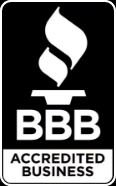Your home’s siding is more than just a pretty face; it’s the weatherproof shield that keeps your house safe and sound. But even the most valiant shield needs regular maintenance to stay strong and beautiful. Here’s your guide to keeping your siding looking its best for years to come.
The First Line of Defense: Regular Cleaning is Key
Frequency depends on your siding material and environment, but regular cleaning is essential. A good yearly clean is a good rule of thumb, more often if you live in a dusty or polluted area. Here’s your cleaning arsenal:
- Water: Your best friend! A good rinse with a hose can remove dirt, grime, and cobwebs.
- Soap: For tougher jobs, mix a mild dish soap solution in a bucket. Avoid harsh chemicals that can damage your siding.
- Soft Brush: Gently scrub the siding to loosen dirt. A sponge can also work for some materials. Avoid stiff bristles that can scratch.
- No-Pressure Washer Policy: High-pressure washers can damage some siding materials. Check with a professional or your siding manufacturer’s recommendations before using one.
Inspection Time: Become a Siding Sherlock Holmes
A keen eye is your best friend. Regularly inspect your siding for any signs of trouble, like:
- Cracks, Gaps, or Holes: These entry points for moisture can lead to rot and other problems. Address them promptly.
- Warping or Buckling: This can indicate moisture damage or aging material. Don’t delay repairs.
- Mold or Mildew Growth: This is a sign of excess moisture. Address the source and clean the affected area with a solution of bleach and water (wear gloves and proper ventilation).
- Loose Panels: Reattach or replace any loose siding to prevent further damage.
- Paint Peeling or Fading: Peeling paint indicates underlying issues. Fading might be time for a repaint (or a sign to consider replacing your siding if it’s nearing its lifespan).
Beyond Cleaning: Preventive Measures Make a Difference
- Trim Those Troublesome Trees: Overhanging branches can scratch your siding and trap moisture. Keep them trimmed a safe distance away from your house.
- Direct the Flow: Ensure your gutters and downspouts are properly functioning to divert water away from your siding.
- Mind the Salt : Rock salt used for de-icing can damage some siding materials. Rinse your siding after winter snowmelt to remove any salt residue.
When in Doubt, Call in the Experts
For any major repairs or if you’re unsure about how to tackle a cleaning or maintenance issue, don’t hesitate to consult a siding professional. They can assess your siding, recommend the best course of action, and ensure proper repairs are done.
With a little TLC, your siding can stay beautiful and functional for years to come. Remember, routine cleaning, regular inspections, and preventive measures are your allies in the battle against the elements. Keep your siding happy, and your home will stay looking sharp!


